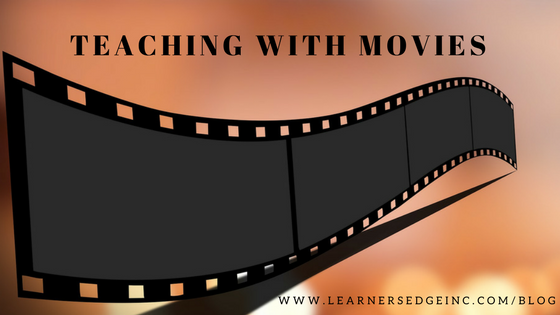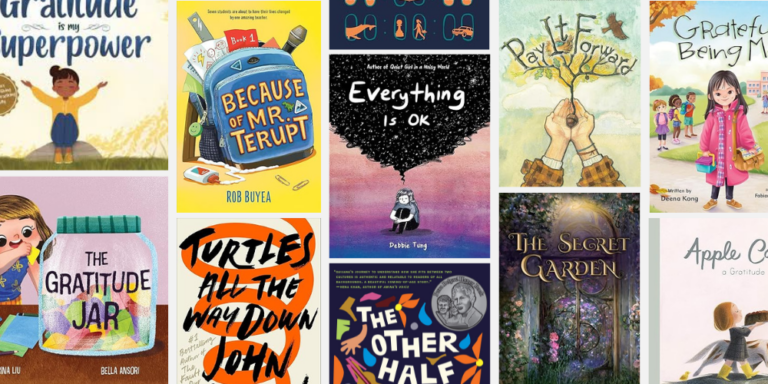Lights, camera, action! Who doesn’t love a great movie? In our classrooms, the visual and emotional impact of movies can engage students in ways that lectures and textbooks alone cannot. Literary themes, mathematical concepts, scientific discoveries, and important historical events can all come alive on the screen. However, part of what makes movies so exciting–imagery, music, and storytelling magic–can also make them ineffective in the classroom. Many students have a hard time seeing “movie time” as anything other than entertainment or a well-deserved reward after the hard work is done. With the right approach and a few new tricks, we can balance the pure joy of movie-watching with the pure magic of active teaching and learning!
As an English teacher, I loved using film in the classroom and teaching with movies to complement my lessons. Here are a few basic ground rules I learned along the way to make “movie day” a meaningful experience:
- Explain the purpose of the film or clip to your students before you start. Students need to know what they are expected to learn and expected to do with the information.
- Build up the lesson with a pre-viewing activity, provide an activity for during-viewing, and follow up with a post-viewing activity. Rather than requiring students to take notes during a movie which can be distracting for some students, I provided guiding questions before we began, so students knew what to watch for. At frequent intervals, we’d stop the film, students would quickly record their answers, and then we’d continue together. At the end, they’d use their “notes” to engage in deeper discussions or writing assignments.
- Never end the movie when the bell rings, instead, end the lesson when the bell rings. Make sure you have time at the beginning and end of each lesson to review, discuss, or engage with the material in the film. Exit slips at the end of each viewing day also work to keep the focus on your learning objectives.
- Stay active during the viewing in the same way you would while teaching a lesson. Watch along with your students and be ready to hit pause if students seem confused or determined to share their thoughts. If you are using a full-length film, build in some breaks at critical points for discussion or other activity.
- Create detailed summary notes of the film or provide alternative ways to view the film for students who are absent. This reinforces the notion that the film is an important part of your curriculum.
Even if you’re a pro at managing your classroom during viewing times, you might not be taking advantage of all of the ways film can work for you. While most teachers don’t want to take up a lot of class time showing full-length movies, consider trying one of these strategies the next time you feel your lessons need refreshing!
Try using film the next time you want to teach:
Social Skills
More and more schools are including self-regulation and social skills as part of their everyday curriculum. Consider using short videos on Mindfulness or breathing exercises to help students de-stress. You can also show scenes from popular movies of young people in conflict and then ask your students to discuss solutions or resolutions to the problems in the scene. Better yet, have your students act out the right way to solve the problem together!
Background Knowledge
Use film clips or whole films to teach background knowledge at the beginning of the unit. A short documentary on the Dust Bowl will help students understand a book like John Steinbeck’s Of Mice and Men more fully. I used scenes from the film In Time to introduce the concepts of dystopian literature before reading Fahrenheit 451. Using films at the beginning of an especially difficult unit can also build engagement and goodwill with your students!
Predicting and Sequencing
Teach students about order and prediction with film clips. Try stopping a scene and asking students, “what do you think will happen next?” Encourage them to use examples from what they have already watched to support their answers. You can also show different clips from the same movie and ask students to put them in order based on what is happening in each scene.
Comparison and Contrast
Instead of just watching the film version of a story or novel you are reading, pick out a complementary film–one with similar themes, characters, or settings, but with enough differences to make it interesting! Ask your students to draw comparisons between the two texts to extend their close-reading skills. After reading Peace Like a River in an 9th grade Advanced English class, our students watched A River Runs Through It. It was amazing to see the sophisticated comparisons students were able to discover!
Fact-Checking
While films based on historical events can help students “see” and make sense of the past, they often contain inaccuracies. At the end of a unit, use scenes from related films and ask students to identify and correct inconsistencies. As part of the same unit, have students explore the validity of their fact-checking websites for a larger conversation on media literacy.
There are so many great ways to use movies to enhance teaching and learning. I hope you’ll be inspired to try out a few new ideas and share your best practices with others, too.
Looking for additional ways to integrate pop culture resources into your classroom? Enroll in Learners Edge Course 998: Engaging Students with Pop Culture and learn how media can engage students and enrich instruction across all content areas.
Learners Edge is passionately committed to providing you with continuing education coursework, materials, and tools that will help you succeed in your classroom and in your career.
Offering more than 100 print-based or online courses for teachers, you can earn the graduate credit you need for salary advancement and meet your professional development needs. Contact us today to get started!







